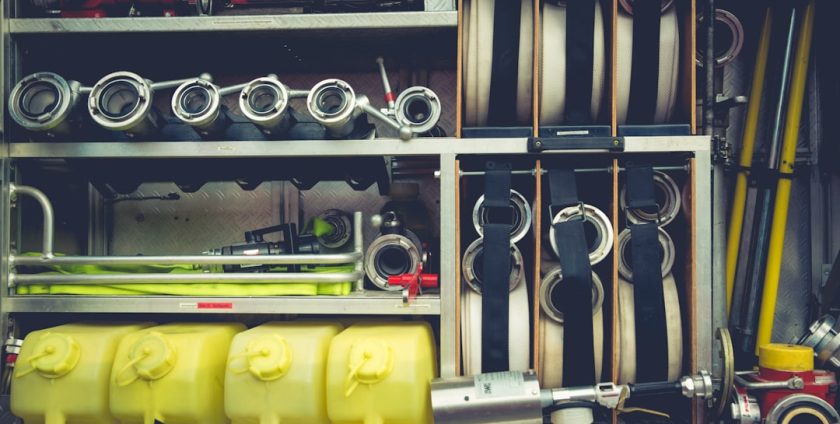
- By: admin
- Category: Commercial Floor Cleaning Machines
- 0 comment
In the realm of commercial and industrial cleaning, the performance of your cleaning equipment can significantly influence the overall efficiency of your operations. Proper storage is often an overlooked aspect that can make or break the effectiveness of your tools. When cleaning equipment is stored correctly, it not only maintains its functionality but also ensures that it is readily available for use when needed.
For instance, a well-organised storage area can reduce the time spent searching for equipment, allowing cleaning staff to focus on their tasks rather than wasting precious minutes locating a vacuum or mop. Moreover, the environment in which cleaning equipment is stored plays a crucial role in its performance. Equipment exposed to extreme temperatures, humidity, or dust can suffer from reduced efficacy.
For example, a high-pressure cleaner stored in a damp area may develop rust, leading to decreased pressure and performance issues. By ensuring that cleaning equipment is stored in a controlled environment, facility managers can enhance the longevity and reliability of their tools, ultimately leading to a more efficient cleaning process. Please feel free to get in touch with us through our Contact Us page.
Summary
- Proper storage can significantly impact the performance of cleaning equipment
- Correct storage methods can prevent damage and wear on cleaning equipment
- Maximise the lifespan of your cleaning equipment by storing it properly
- Health and safety considerations are important when storing cleaning equipment
- Organising and streamlining your cleaning equipment inventory can improve efficiency and effectiveness
Preventing Damage and Wear with Correct Storage Methods
The longevity of cleaning equipment is directly linked to how it is stored. Incorrect storage methods can lead to significant damage and wear over time. For instance, stacking heavy items on top of lighter ones can cause breakage or deformation of more delicate equipment.
Similarly, leaving hoses coiled improperly can lead to kinks and leaks that compromise their functionality. Implementing proper storage methods, such as using shelving units designed for specific equipment types, can mitigate these risks and ensure that each item remains in optimal condition. Additionally, using protective covers or cases for sensitive equipment can further prevent damage.
For example, floor scrubbers and polishers are often susceptible to dust and debris accumulation when left uncovered. By investing in appropriate storage solutions, such as dedicated cabinets or racks with dust covers, facility managers can significantly reduce the risk of wear and tear on their cleaning equipment. This proactive approach not only preserves the integrity of the tools but also enhances their performance when deployed in the field.
Maximising the Lifespan of Your Cleaning Equipment

Maximising the lifespan of cleaning equipment is a priority for any facility manager or contract cleaner. Proper storage is a fundamental aspect of this goal. When equipment is stored correctly, it reduces the likelihood of damage and wear, which can lead to costly repairs or replacements.
For instance, regularly inspecting and maintaining equipment while it is in storage can help identify potential issues before they escalate into significant problems. This practice not only extends the life of the equipment but also ensures that it operates at peak performance when needed. Furthermore, implementing a routine maintenance schedule for stored equipment can significantly enhance its lifespan.
This could involve checking for signs of wear, lubricating moving parts, and ensuring that all components are functioning correctly. For example, a facility manager might establish a quarterly inspection routine for all cleaning machines, ensuring that any necessary repairs are addressed promptly. By taking these proactive measures, organisations can avoid unexpected downtime and maintain a consistent level of cleanliness across their facilities.
Health and Safety Considerations for Proper Storage
Health and safety considerations are paramount when it comes to storing cleaning equipment. A cluttered or disorganised storage area can pose significant risks to staff members who need to access these tools regularly. For instance, improperly stored chemicals or heavy equipment can lead to accidents such as slips, trips, and falls.
Therefore, it is essential to create a safe storage environment that adheres to health and safety regulations. In addition to physical safety, proper storage also involves ensuring that hazardous materials are stored according to legal requirements. Cleaning chemicals should be kept in clearly labelled containers and stored in designated areas away from non-hazardous items.
This not only protects staff from potential exposure but also ensures compliance with workplace safety standards. By prioritising health and safety in storage practices, facility managers can create a safer working environment while also promoting a culture of responsibility among cleaning staff.
Organising and Streamlining Your Cleaning Equipment Inventory
An organised inventory of cleaning equipment is crucial for efficient operations within any commercial or industrial setting. A well-structured inventory system allows staff to quickly locate the tools they need without unnecessary delays. For example, implementing a colour-coded system for different types of equipment can streamline the process of identifying and retrieving items.
This method not only saves time but also reduces the likelihood of misplacing or losing valuable tools. Moreover, regular audits of the cleaning equipment inventory can help identify items that are no longer in use or require replacement. By keeping track of what is available and what needs attention, facility managers can make informed decisions about purchasing new equipment or retiring outdated tools.
This proactive approach not only enhances operational efficiency but also ensures that resources are allocated effectively.
The Cost-Saving Benefits of Proper Storage Practices

Investing in proper storage practices for cleaning equipment can yield significant cost-saving benefits over time. When equipment is stored correctly, it experiences less wear and tear, leading to reduced maintenance costs and extended lifespans. For instance, a facility that implements effective storage solutions may find that their floor scrubbers last twice as long as those stored haphazardly, resulting in substantial savings on replacement costs.
Additionally, an organised storage area can lead to increased productivity among cleaning staff. When employees can easily access the tools they need without wasting time searching for them, they can complete their tasks more efficiently. This increased productivity translates into lower labour costs and improved service delivery for clients.
Ultimately, by prioritising proper storage practices, organisations can achieve a more cost-effective approach to their cleaning operations.
Environmental Impact and Sustainability of Proper Storage
The environmental impact of cleaning operations cannot be overlooked, and proper storage practices play a vital role in promoting sustainability within the industry. By ensuring that cleaning equipment is stored correctly, organisations can reduce waste generated from damaged tools and unnecessary replacements. For example, when floor buffers are stored in protective cases rather than left exposed to dust and moisture, they are less likely to require frequent repairs or replacements.
Moreover, implementing eco-friendly storage solutions can further enhance sustainability efforts. Using recycled materials for shelving units or opting for energy-efficient lighting in storage areas demonstrates a commitment to environmental responsibility. Facility managers who prioritise sustainable practices not only contribute positively to the environment but also enhance their organisation’s reputation among clients who value eco-conscious operations.
Tips for Implementing Effective Storage Solutions for Your Cleaning Equipment
Implementing effective storage solutions for cleaning equipment requires careful planning and consideration. First and foremost, assess the specific needs of your organisation by evaluating the types of equipment used and the available storage space. This assessment will help determine whether custom shelving units or standard racks are more appropriate for your needs.
Next, consider incorporating technology into your storage solutions. Inventory management software can streamline tracking and organisation efforts by providing real-time data on equipment availability and condition. Additionally, utilising mobile apps for inventory checks can enhance accessibility for staff members who may need to access information on-the-go.
Finally, engage your cleaning staff in the process of organising storage areas. Their insights into how they use equipment daily can provide valuable information on optimising storage solutions for efficiency and accessibility. By fostering a collaborative approach to storage organisation, you not only improve operational efficiency but also empower your team to take ownership of their work environment.
In conclusion, proper storage practices for cleaning equipment are essential for maximising performance, preventing damage, ensuring health and safety compliance, and promoting sustainability within commercial and industrial settings. By prioritising effective storage solutions, facility managers can enhance operational efficiency while also achieving significant cost savings over time. As the industry continues to evolve, embracing these best practices will be crucial for maintaining a competitive edge.
**FAQs** 1. **What are the key benefits of proper storage for cleaning equipment?**
Proper storage enhances performance, prevents damage and wear, maximises lifespan, ensures health and safety compliance, streamlines inventory management, saves costs, and promotes sustainability. 2.
**How often should I inspect my stored cleaning equipment?**
It is advisable to conduct regular inspections at least quarterly to identify any potential issues before they escalate into significant problems. 3. **What are some effective methods for organising cleaning equipment?**
Implementing colour-coded systems, using shelving units designed for specific equipment types, and engaging staff in the organisation process are all effective methods.
4. **How does proper storage contribute to sustainability?**
Proper storage reduces waste from damaged tools and promotes eco-friendly practices through the use of sustainable materials and energy-efficient solutions. 5.
**What should I consider when designing a storage area for cleaning equipment?**
Assess your organisation’s specific needs based on the types of equipment used and available space while considering technology integration for inventory management.
FAQs
Why is proper storage important for cleaning equipment?
Proper storage of cleaning equipment is important to maintain the equipment’s effectiveness, prolong its lifespan, and ensure the safety of users. Storing equipment correctly also helps to prevent damage and reduce the risk of accidents.
What are the consequences of improper storage of cleaning equipment?
Improper storage of cleaning equipment can lead to damage, corrosion, and deterioration of the equipment. It can also result in safety hazards, such as tripping over improperly stored items or exposure to harmful chemicals.
How can proper storage prolong the lifespan of cleaning equipment?
Proper storage can prevent unnecessary wear and tear on cleaning equipment, such as brushes, mops, and vacuum cleaners. Storing equipment in a clean, dry, and well-ventilated area can help prevent rust, corrosion, and degradation of materials.
What are some best practices for storing cleaning equipment?
Best practices for storing cleaning equipment include cleaning and drying the equipment before storage, storing items in designated areas or cabinets, and ensuring that hazardous chemicals are stored in accordance with safety regulations. It is also important to regularly inspect and maintain the storage area to prevent any potential hazards.
How can proper storage of cleaning equipment contribute to a safer working environment?
Proper storage of cleaning equipment can reduce the risk of accidents and injuries in the workplace. By keeping equipment properly stored and organized, the likelihood of tripping hazards and exposure to hazardous materials is minimized, creating a safer working environment for employees.
